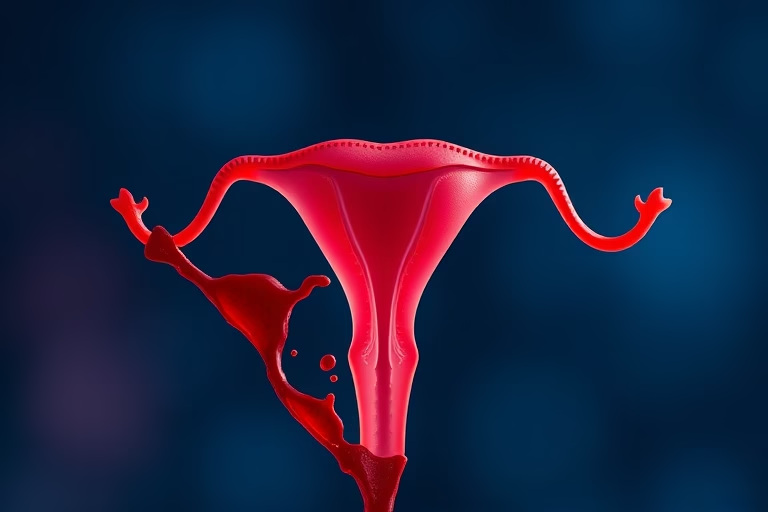Understanding Implantation Bleeding and Clots
In this article, we will be talking about the topic of implantation bleeding and its possible connection to blood clots. Implantation bleeding occurs when a fertilized egg attaches itself to the lining of the uterus, leading to light spotting or bleeding. This process generally occurs around 6 to 12 days after conception and is often mistaken for a light period. Some women may notice clots during this bleeding, prompting questions regarding the normalcy and safety of this occurrence.
Understanding the distinction between implantation bleeding and a typical menstrual cycle is crucial. Unlike a menstrual period, which usually involves heavier bleeding with more pronounced clotting, implantation bleeding is typically short-lived and accompanied by less blood. Although the presence of clots during implantation bleeding can raise concerns, it is essential to recognize that small clots are not uncommon. However, understanding the circumstances surrounding these clots can help clarify when it is necessary to consult a healthcare provider.
What is Implantation Bleeding?
Implantation bleeding signifies the early stage of pregnancy. When a fertilized egg travels down the fallopian tube and enters the uterus, it may cause minor bleeding as it embeds itself within the uterine wall. This bleeding is generally family-friendly and less intense than menstruation.
Generally occurring one week to two weeks after conception, implantation bleeding may be mistaken for a light period. Women may experience some symptoms, such as cramping or mild discomfort in the lower abdomen, which can accompany the spotting. Not every woman, however, experiences this bleeding. Symptoms can vary significantly from one individual to another.
During this time, the body undergoes significant hormonal changes. These hormonal shifts can contribute to other early signs of pregnancy, such as breast tenderness, fatigue, and heightened sense of smell. It’s important to distinguish between these signs and the symptoms of menstruation, as they may differ significantly.
Normal Characteristics of Implantation Bleeding
The characteristics of implantation bleeding can vary, but there are some defining traits that many women can expect. This type of bleeding is typically light in both color and flow. It might appear as a pink or brownish discharge rather than the bright red of menstrual blood.
Implantation bleeding lasts for a brief time, typically only a few hours to a couple of days. The volume of blood present during this phase is minimal, and the bleeding is intermittent. Women may notice this spotting when wiping or in their underwear but not enough to fill a menstrual pad.
Understanding these characteristics helps women distinguish between implantation bleeding and their typical menstrual cycle. If bleeding is heavier or accompanied by significant pain, it may indicate a more serious issue, warranting medical consultation.
Can Implantation Bleeding Cause Clots?
The presence of clots during bleeding can cause concern, especially for those experiencing implantation bleeding. It’s essential to know that minor clots may be normal during implantation bleeding. Women may notice small, jelly-like clots or tissues in the discharge.
The formation of clots can occur due to various reasons, such as the rapid change in the uterine lining or the body’s adjustment to hormonal shifts during early pregnancy. While having a small number of clots during implantation bleeding can be within the realm of normal, it is crucial to monitor any additional symptoms that may accompany this phenomenon.
If a woman experiences significant clotting or bleeding that resembles a menstrual cycle, it is advised to consult with a healthcare professional. They can provide guidance and reassurance, checking for any underlying issues that may need attention.
When to Seek Medical Attention
While it is generally normal to experience small clots during implantation bleeding, certain symptoms may require medical evaluation. If the bleeding becomes heavy or resembles a menstrual cycle, it is crucial to consult a healthcare provider immediately.
Signs that warrant a medical visit include but are not limited to:
Recognizing these red flags can help women seek timely medical attention, ensuring safety and health for both the mother and developing fetus. It is essential to pay attention to the body’s signals and not hesitate to reach out for help when needed.
Misinformation About Implantation Bleeding
Misinformation can lead to unnecessary anxiety and confusion about implantation bleeding and its significance. A common misconception is that all bleeding in early pregnancy indicates a miscarriage. While bleeding can occur for various reasons, not all bleeding represents a complication.
Another myth is that implantation bleeding always involves heavy clots or tissue. Many women may experience light spotting without any clots present, and this could still be a normal sign of pregnancy.
Understanding the facts about implantation bleeding and clots can empower women to manage their experiences better. Education can help alleviate fears and provide clarity regarding the natural variations that accompany early pregnancy.
Personal Monitoring During Early Pregnancy
Monitoring one’s health during early pregnancy is vital. Keeping a detailed journal of any bleeding, including color, quantity, and accompanying symptoms, can be beneficial. This record can help provide valuable information to healthcare providers during visits.
Maintaining open communication with healthcare professionals can ensure reassurance and timely interventions when necessary. It’s also valuable to discuss any concerns regarding implantation bleeding and potential clots, ensuring that women feel supported throughout their pregnancy journey.
Final Thoughts
Understanding the nature of implantation bleeding and the potential for clots can help women navigate early pregnancy with confidence. Recognizing that minor clots may be part of this process helps demystify the experience, as does the understanding of when to seek medical advice. Awareness of the body’s signals and being able to differentiate between normal signs and those that require attention is crucial.
The key is to be informed and proactive. Women should empower themselves with knowledge about their bodies and seek support when needed, whether through friends, family, or healthcare professionals. This approach can mitigate worries and provide reassurance during a thrilling yet often uncertain time.
Frequently Asked Questions
1. What color is implantation bleeding?
Implantation bleeding generally appears as light pink or brown, unlike the bright red of menstrual blood.
2. How long does implantation bleeding last?
This type of bleeding usually lasts for a few hours to a couple of days.
3. Is it normal to have cramps with implantation bleeding?
Some women may experience mild cramps, which can accompany the spotting.
4. Can other conditions cause implantation-like bleeding?
Yes, various conditions such as hormonal imbalances, ectopic pregnancy, and fibroids can cause similar bleeding. Consulting a professional is essential for accurate diagnosis.
5. Should I worry about clots during implantation bleeding?
Small clots can be normal; however, any significant bleeding or large clots should prompt a visit to a healthcare provider.
Further Reading
What Type of Psychotherapy Is Best for Anxiety?







